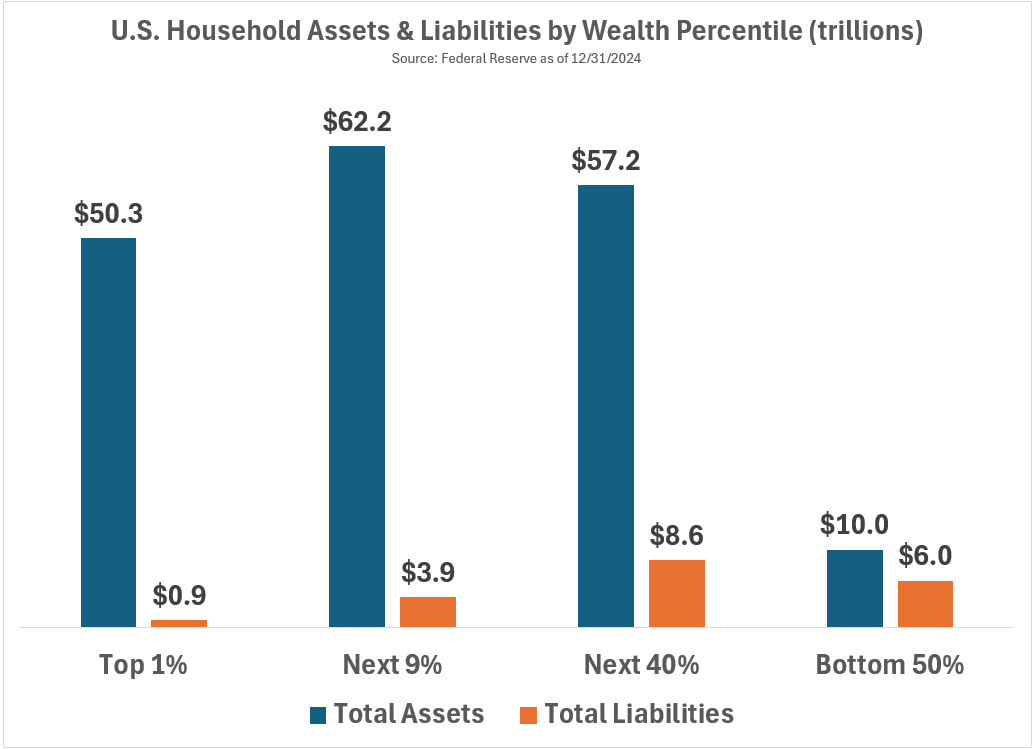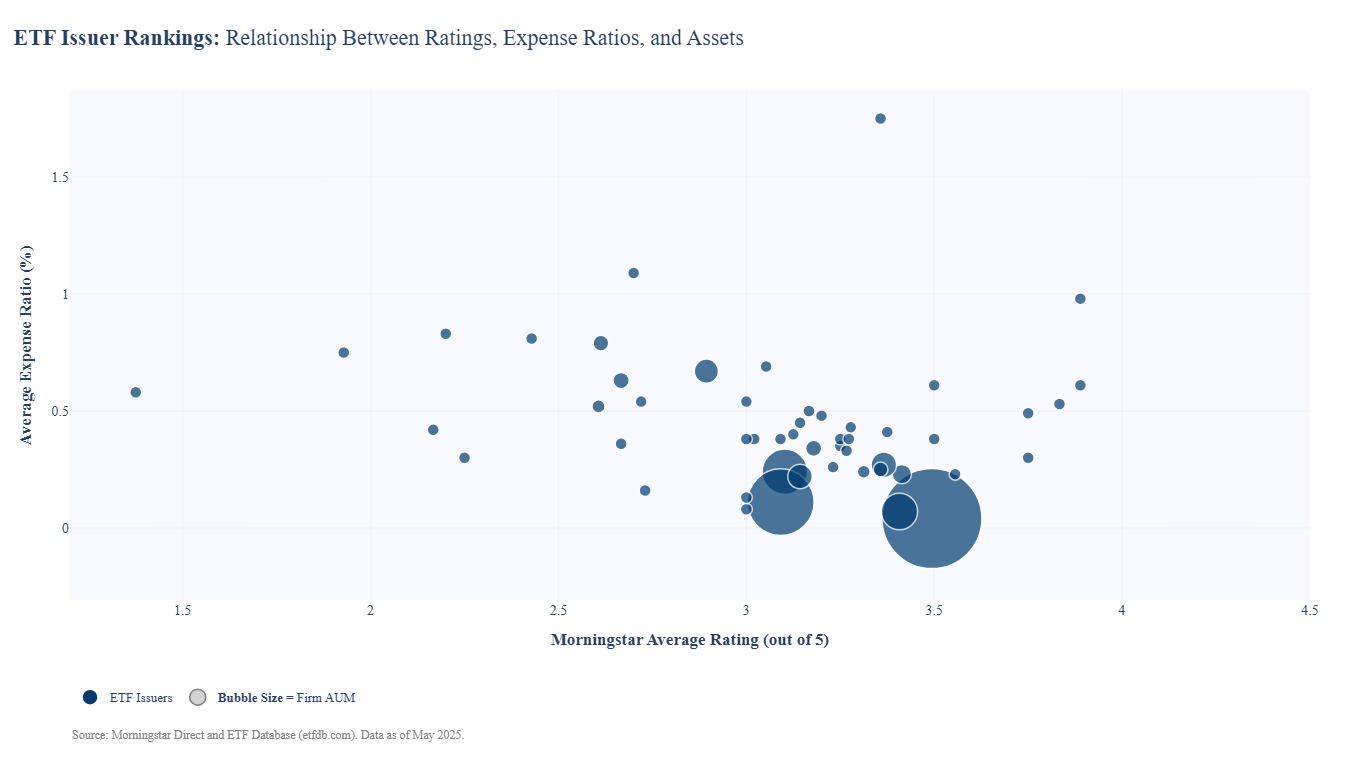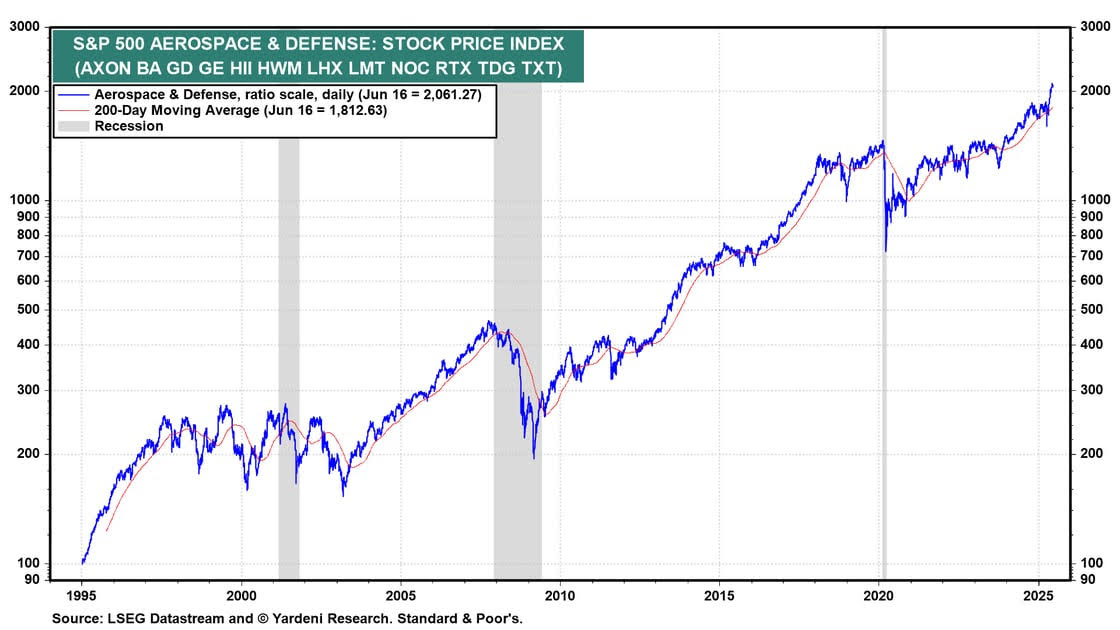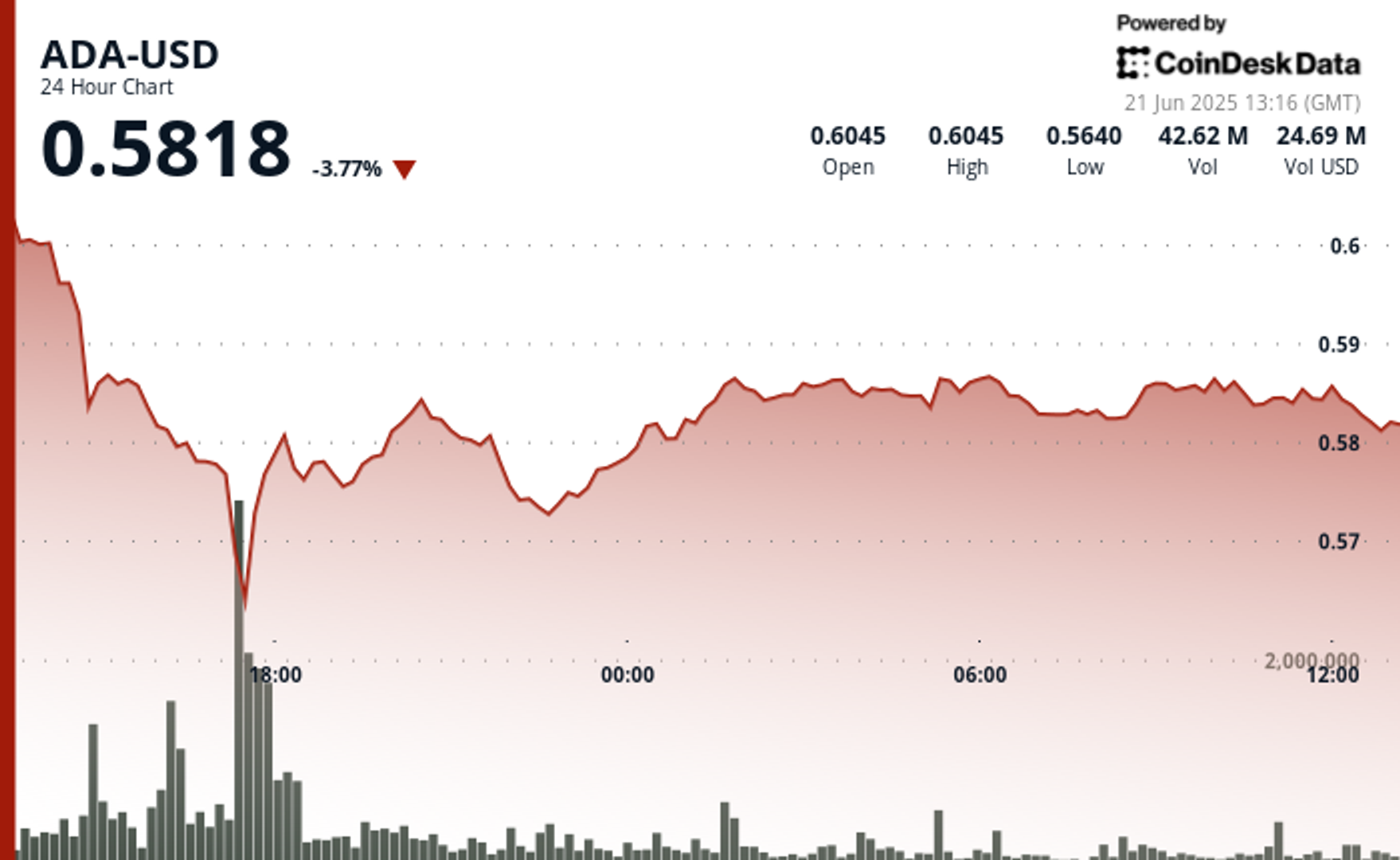These Counties Will Have Supercharged Population Growth Over The Next 75 Years
While declining fertility rates and an aging population will cause population growth in the United States to slow over the course of the 21st century, a small subset of the country is expected to experience rapid expansion through 2100. Over the next 75 years, trends in mobility and shifts in domestic migration patterns will significantly […] The post These Counties Will Have Supercharged Population Growth Over The Next 75 Years appeared first on 24/7 Wall St..

Key Points
-
According to new population projections, 20 counties will gain over 1.2 million new residents each by 2100.
-
Growth is centering around the urban and suburban cores of large metro areas.
-
The county with the greatest projected growth will add a net 6 million new residents by 2100.
-
Where will your assets be in 2100? Click here to talk to a financial advisor.
While declining fertility rates and an aging population will cause population growth in the United States to slow over the course of the 21st century, a small subset of the country is expected to experience rapid expansion through 2100. Over the next 75 years, trends in mobility and shifts in domestic migration patterns will significantly alter the distribution of population throughout the United States.
Researchers from NASA’s Socioeconomic Data and Applications Center recently released county-level population forecasts through the year 2100. Projections are based on an SSP2 “middle-of-the-road” scenario of population growth, a widely used demographic pathway that assumes the continuation of existing global and national development trends.
NASA’s forecasts show an overwhelming shift in population to a few key regions in the Sun Belt and Mountain West. There are several counties in Texas, Florida, California, and Arizona forecast to add more than one million residents each by 2100. In some fast-growing metro areas, population counts are expected to more than double. Many of the fastest-growing counties are already economic engines, drawing in new residents with booming real estate markets, robust job growth, and relatively affordable living costs. A closer look at the data reveals the U.S. counties projected to experience the greatest population surges over the next 75 years.
To identify the counties expected to have the largest population increases over the next 75 years, 24/7 Wall St. analyzed data from NASA’s SEDAC U.S. County-Level Population Projections. Counties were ranked based on projected population growth from 2025 to 2100. Population projections are based on SSP2 in the Shared Socioeconomic Pathways system, a “middle-of-the-road” scenario in which historical demographic trends largely continue. Supplemental data on median household income is from the U.S. Census Bureau’s 2023 American Community Survey. Economic sector data is from the Bureau of Economic Analysis and reflects each county’s largest industry by GDP share.
40. Osceola County, FL

- Projected population decline, 2025-2100: +822,036 residents
- Projected population, 2100: 1,269,660 residents
- Current population, 2025: 447,624 residents
- Median household income: $68,711
- Largest industry: Real estate and rental and leasing (27.1% of GDP)
- Largest cities: Kissimmee, St. Cloud, Four Corners, Buenaventura Lakes, Celebration, Campbell, Yeehaw Junction
39. Suffolk County, MA

- Projected population decline, 2025-2100: +833,042 residents
- Projected population, 2100: 1,748,505 residents
- Current population, 2025: 915,464 residents
- Median household income: $92,859
- Largest industry: Professional, scientific, and technical services (19.8% of GDP)
- Largest cities: Boston, Revere, Chelsea, Winthrop Town
38. Orleans Parish, LA

- Projected population decline, 2025-2100: +842,584 residents
- Projected population, 2100: 1,355,609 residents
- Current population, 2025: 513,025 residents
- Median household income: $55,339
- Largest industry: Government and government enterprises (14.8% of GDP)
- Largest cities: New Orleans
37. Lee County, FL

- Projected population decline, 2025-2100: +854,902 residents
- Projected population, 2100: 1,726,848 residents
- Current population, 2025: 871,946 residents
- Median household income: $73,099
- Largest industry: Real estate and rental and leasing (26.7% of GDP)
- Largest cities: Cape Coral, Lehigh Acres, Fort Myers, Bonita Springs, North Fort Myers, Estero, San Carlos Park
36. Montgomery County, MD

- Projected population decline, 2025-2100: +862,388 residents
- Projected population, 2100: 2,035,619 residents
- Current population, 2025: 1,173,231 residents
- Median household income: $128,733
- Largest industry: Government and government enterprises (19.8% of GDP)
- Largest cities: Germantown, Silver Spring, Gaithersburg, Rockville, Bethesda, Aspen Hill, Wheaton
35. New York County, NY

- Projected population decline, 2025-2100: +877,208 residents
- Projected population, 2100: 2,702,933 residents
- Current population, 2025: 1,825,725 residents
- Median household income: $104,553
- Largest industry: Finance and insurance (31.7% of GDP)
- Largest cities: New York
34. Davidson County, TN

- Projected population decline, 2025-2100: +905,533 residents
- Projected population, 2100: 1,714,101 residents
- Current population, 2025: 808,568 residents
- Median household income: $75,664
- Largest industry: Health care and social assistance (13.8% of GDP)
- Largest cities: Nashville-Davidson metropolitan government (balance), Forest Hills, Oak Hill, Belle Meade, Berry Hill
33. Utah County, UT

- Projected population decline, 2025-2100: +915,968 residents
- Projected population, 2100: 1,609,388 residents
- Current population, 2025: 693,420 residents
- Median household income: $96,877
- Largest industry: Real estate and rental and leasing (12.9% of GDP)
- Largest cities: Provo, Orem, Lehi, Eagle Mountain, Spanish Fork, Saratoga Springs, Pleasant Grove
32. San Francisco County, CA

- Projected population decline, 2025-2100: +935,831 residents
- Projected population, 2100: 1,966,767 residents
- Current population, 2025: 1,030,936 residents
- Median household income: $141,446
- Largest industry: Professional, scientific, and technical services (20.1% of GDP)
- Largest cities: San Francisco
31. Fulton County, GA

- Projected population decline, 2025-2100: +1,018,694 residents
- Projected population, 2100: 2,222,402 residents
- Current population, 2025: 1,203,707 residents
- Median household income: $91,490
- Largest industry: Information (15.7% of GDP)
- Largest cities: Atlanta, South Fulton, Sandy Springs, Roswell, Johns Creek, Alpharetta, Milton
30. District of Columbia, DC

- Projected population decline, 2025-2100: +1,025,215 residents
- Projected population, 2100: 1,847,141 residents
- Current population, 2025: 821,926 residents
- Median household income: $106,287
- Largest industry: Government and government enterprises (31.2% of GDP)
- Largest cities: Washington
29. Palm Beach County, FL

- Projected population decline, 2025-2100: +1,069,492 residents
- Projected population, 2100: 2,706,979 residents
- Current population, 2025: 1,637,487 residents
- Median household income: $81,115
- Largest industry: Real estate and rental and leasing (22.3% of GDP)
- Largest cities: West Palm Beach, Boca Raton, Boynton Beach, Delray Beach, Wellington, Jupiter, Palm Beach Gardens
28. Riverside County, CA

- Projected population decline, 2025-2100: +1,102,119 residents
- Projected population, 2100: 3,766,594 residents
- Current population, 2025: 2,664,475 residents
- Median household income: $89,672
- Largest industry: Real estate and rental and leasing (19.2% of GDP)
- Largest cities: Riverside, Moreno Valley, Corona, Murrieta, Temecula, Jurupa Valley, Menifee
27. Hennepin County, MN

- Projected population decline, 2025-2100: +1,104,748 residents
- Projected population, 2100: 2,509,976 residents
- Current population, 2025: 1,405,227 residents
- Median household income: $96,339
- Largest industry: Finance and insurance (13.3% of GDP)
- Largest cities: Minneapolis, Bloomington, Brooklyn Park, Plymouth, Maple Grove, Eden Prairie, Minnetonka
26. San Diego County, CA

- Projected population decline, 2025-2100: +1,154,317 residents
- Projected population, 2100: 4,832,502 residents
- Current population, 2025: 3,678,185 residents
- Median household income: $102,285
- Largest industry: Government and government enterprises (17.1% of GDP)
- Largest cities: San Diego, Chula Vista, Oceanside, Escondido, Carlsbad, El Cajon, Vista
25. Oklahoma County, OK

- Projected population decline, 2025-2100: +1,176,572 residents
- Projected population, 2100: 2,088,448 residents
- Current population, 2025: 911,875 residents
- Median household income: $65,374
- Largest industry: Government and government enterprises (16.2% of GDP)
- Largest cities: Oklahoma City, Edmond, Midwest City, Del City, Bethany, Choctaw, Warr Acres
24. Franklin County, OH

- Projected population decline, 2025-2100: +1,180,656 residents
- Projected population, 2100: 2,636,796 residents
- Current population, 2025: 1,456,139 residents
- Median household income: $73,795
- Largest industry: Government and government enterprises (13.3% of GDP)
- Largest cities: Columbus, Dublin, Grove City, Reynoldsburg, Westerville, Upper Arlington, Hilliard
23. Denver County, CO

- Projected population decline, 2025-2100: +1,220,232 residents
- Projected population, 2100: 2,103,725 residents
- Current population, 2025: 883,493 residents
- Median household income: $91,681
- Largest industry: Real estate and rental and leasing (17.0% of GDP)
- Largest cities: Denver
22. Montgomery County, TX

- Projected population decline, 2025-2100: +1,223,984 residents
- Projected population, 2100: 1,937,880 residents
- Current population, 2025: 713,896 residents
- Median household income: $97,266
- Largest industry: Manufacturing (18.6% of GDP)
- Largest cities: The Woodlands, Conroe, Willis, Pinehurst, Shenandoah, Oak Ridge North, Magnolia
21. Williamson County, TX

- Projected population decline, 2025-2100: +1,225,126 residents
- Projected population, 2100: 1,924,153 residents
- Current population, 2025: 699,027 residents
- Median household income: $108,309
- Largest industry: Real estate and rental and leasing (20.6% of GDP)
- Largest cities: Round Rock, Cedar Park, Georgetown, Leander, Hutto, Brushy Creek, Taylor
20. Salt Lake County, UT

- Projected population decline, 2025-2100: +1,245,530 residents
- Projected population, 2100: 2,551,390 residents
- Current population, 2025: 1,305,860 residents
- Median household income: $94,658
- Largest industry: Finance and insurance (13.6% of GDP)
- Largest cities: Salt Lake City, West Valley City, West Jordan, Sandy, South Jordan, Millcreek, Taylorsville
19. Hillsborough County, FL

- Projected population decline, 2025-2100: +1,284,536 residents
- Projected population, 2100: 2,891,558 residents
- Current population, 2025: 1,607,022 residents
- Median household income: $75,011
- Largest industry: Real estate and rental and leasing (15.2% of GDP)
- Largest cities: Tampa, Brandon, Riverview, Town ‘n’ Country, University, Plant City, Valrico
18. Alameda County, CA

- Projected population decline, 2025-2100: +1,305,249 residents
- Projected population, 2100: 3,234,133 residents
- Current population, 2025: 1,928,884 residents
- Median household income: $126,240
- Largest industry: Real estate and rental and leasing (13.0% of GDP)
- Largest cities: Oakland, Fremont, Hayward, Berkeley, San Leandro, Livermore, Pleasanton
17. Gwinnett County, GA

- Projected population decline, 2025-2100: +1,337,293 residents
- Projected population, 2100: 2,443,321 residents
- Current population, 2025: 1,106,028 residents
- Median household income: $84,823
- Largest industry: Real estate and rental and leasing (14.3% of GDP)
- Largest cities: Peachtree Corners, Duluth, Lawrenceville, Sugar Hill, Suwanee, Snellville, Norcross
16. Wake County, NC

- Projected population decline, 2025-2100: +1,600,183 residents
- Projected population, 2100: 2,893,335 residents
- Current population, 2025: 1,293,152 residents
- Median household income: $101,763
- Largest industry: Professional, scientific, and technical services (13.4% of GDP)
- Largest cities: Raleigh, Cary, Apex, Wake Forest, Holly Springs, Fuquay-Varina, Garner
15. Denton County, TX

- Projected population decline, 2025-2100: +1,726,172 residents
- Projected population, 2100: 2,779,183 residents
- Current population, 2025: 1,053,010 residents
- Median household income: $108,185
- Largest industry: Real estate and rental and leasing (18.7% of GDP)
- Largest cities: Denton, Lewisville, Flower Mound, Little Elm, The Colony, Corinth, Highland Village
14. Miami-Dade County, FL

- Projected population decline, 2025-2100: +1,740,160 residents
- Projected population, 2100: 4,866,598 residents
- Current population, 2025: 3,126,439 residents
- Median household income: $68,694
- Largest industry: Real estate and rental and leasing (17.4% of GDP)
- Largest cities: Miami, Hialeah, Miami Gardens, Miami Beach, Homestead, Kendall, Doral
13. Collin County, TX

- Projected population decline, 2025-2100: +1,741,974 residents
- Projected population, 2100: 2,952,048 residents
- Current population, 2025: 1,210,074 residents
- Median household income: $117,588
- Largest industry: Real estate and rental and leasing (14.9% of GDP)
- Largest cities: Plano, Frisco, McKinney, Allen, Wylie, Prosper, Celina
12. Broward County, FL

- Projected population decline, 2025-2100: +1,763,952 residents
- Projected population, 2100: 3,970,984 residents
- Current population, 2025: 2,207,033 residents
- Median household income: $74,534
- Largest industry: Real estate and rental and leasing (19.9% of GDP)
- Largest cities: Fort Lauderdale, Pembroke Pines, Hollywood, Miramar, Coral Springs, Pompano Beach, Davie
11. Mecklenburg County, NC

- Projected population decline, 2025-2100: +1,801,015 residents
- Projected population, 2100: 3,106,755 residents
- Current population, 2025: 1,305,740 residents
- Median household income: $83,765
- Largest industry: Finance and insurance (23.3% of GDP)
- Largest cities: Charlotte, Huntersville, Cornelius, Matthews, Mint Hill, Davidson, Pineville
10. Fort Bend County, TX

- Projected population decline, 2025-2100: +1,926,002 residents
- Projected population, 2100: 2,930,528 residents
- Current population, 2025: 1,004,526 residents
- Median household income: $113,409
- Largest industry: Real estate and rental and leasing (20.7% of GDP)
- Largest cities: Sugar Land, Missouri City, Rosenberg, Mission Bend, Fresno, Pecan Grove, Fulshear
9. Orange County, FL

- Projected population decline, 2025-2100: +1,989,556 residents
- Projected population, 2100: 3,607,781 residents
- Current population, 2025: 1,618,226 residents
- Median household income: $77,011
- Largest industry: Real estate and rental and leasing (16.2% of GDP)
- Largest cities: Orlando, Alafaya, Pine Hills, Horizon West, Apopka, Ocoee, Winter Garden
8. Clark County, NV

- Projected population decline, 2025-2100: +2,092,815 residents
- Projected population, 2100: 4,596,916 residents
- Current population, 2025: 2,504,101 residents
- Median household income: $73,845
- Largest industry: Accommodation and food services (15.3% of GDP)
- Largest cities: Las Vegas, Henderson, North Las Vegas, Enterprise, Spring Valley, Sunrise Manor, Paradise
7. Travis County, TX

- Projected population decline, 2025-2100: +2,256,735 residents
- Projected population, 2100: 3,801,868 residents
- Current population, 2025: 1,545,133 residents
- Median household income: $97,169
- Largest industry: Professional, scientific, and technical services (15.9% of GDP)
- Largest cities: Austin, Pflugerville, Lakeway, Manor, Wells Branch, Hornsby Bend, Lago Vista
6. Tarrant County, TX

- Projected population decline, 2025-2100: +2,361,110 residents
- Projected population, 2100: 4,741,527 residents
- Current population, 2025: 2,380,417 residents
- Median household income: $81,905
- Largest industry: Real estate and rental and leasing (13.9% of GDP)
- Largest cities: Fort Worth, Arlington, Mansfield, North Richland Hills, Euless, Grapevine, Bedford
5. Dallas County, TX

- Projected population decline, 2025-2100: +2,528,885 residents
- Projected population, 2100: 5,508,725 residents
- Current population, 2025: 2,979,839 residents
- Median household income: $74,149
- Largest industry: Real estate and rental and leasing (13.4% of GDP)
- Largest cities: Dallas, Irving, Garland, Grand Prairie, Mesquite, Carrollton, Richardson
4. King County, WA

- Projected population decline, 2025-2100: +2,831,245 residents
- Projected population, 2100: 5,407,730 residents
- Current population, 2025: 2,576,485 residents
- Median household income: $122,148
- Largest industry: Information (26.7% of GDP)
- Largest cities: Seattle, Bellevue, Kent, Renton, Federal Way, Kirkland, Auburn
3. Bexar County, TX

- Projected population decline, 2025-2100: +3,196,391 residents
- Projected population, 2100: 5,533,242 residents
- Current population, 2025: 2,336,851 residents
- Median household income: $70,571
- Largest industry: Government and government enterprises (16.3% of GDP)
- Largest cities: San Antonio, Schertz, Timberwood Park, Converse, Universal City, Live Oak, Leon Valley
2. Maricopa County, AZ

- Projected population decline, 2025-2100: +4,268,236 residents
- Projected population, 2100: 9,247,439 residents
- Current population, 2025: 4,979,203 residents
- Median household income: $85,518
- Largest industry: Real estate and rental and leasing (17.0% of GDP)
- Largest cities: Phoenix, Mesa, Chandler, Gilbert, Glendale, Scottsdale, Peoria
1. Harris County, TX

- Projected population decline, 2025-2100: +6,538,465 residents
- Projected population, 2100: 12,109,958 residents
- Current population, 2025: 5,571,493 residents
- Median household income: $73,104
- Largest industry: Manufacturing (13.5% of GDP)
- Largest cities: Houston, Pasadena, Atascocita, Baytown, Spring, Channelview, La Porte
The post These Counties Will Have Supercharged Population Growth Over The Next 75 Years appeared first on 24/7 Wall St..











































































































































































